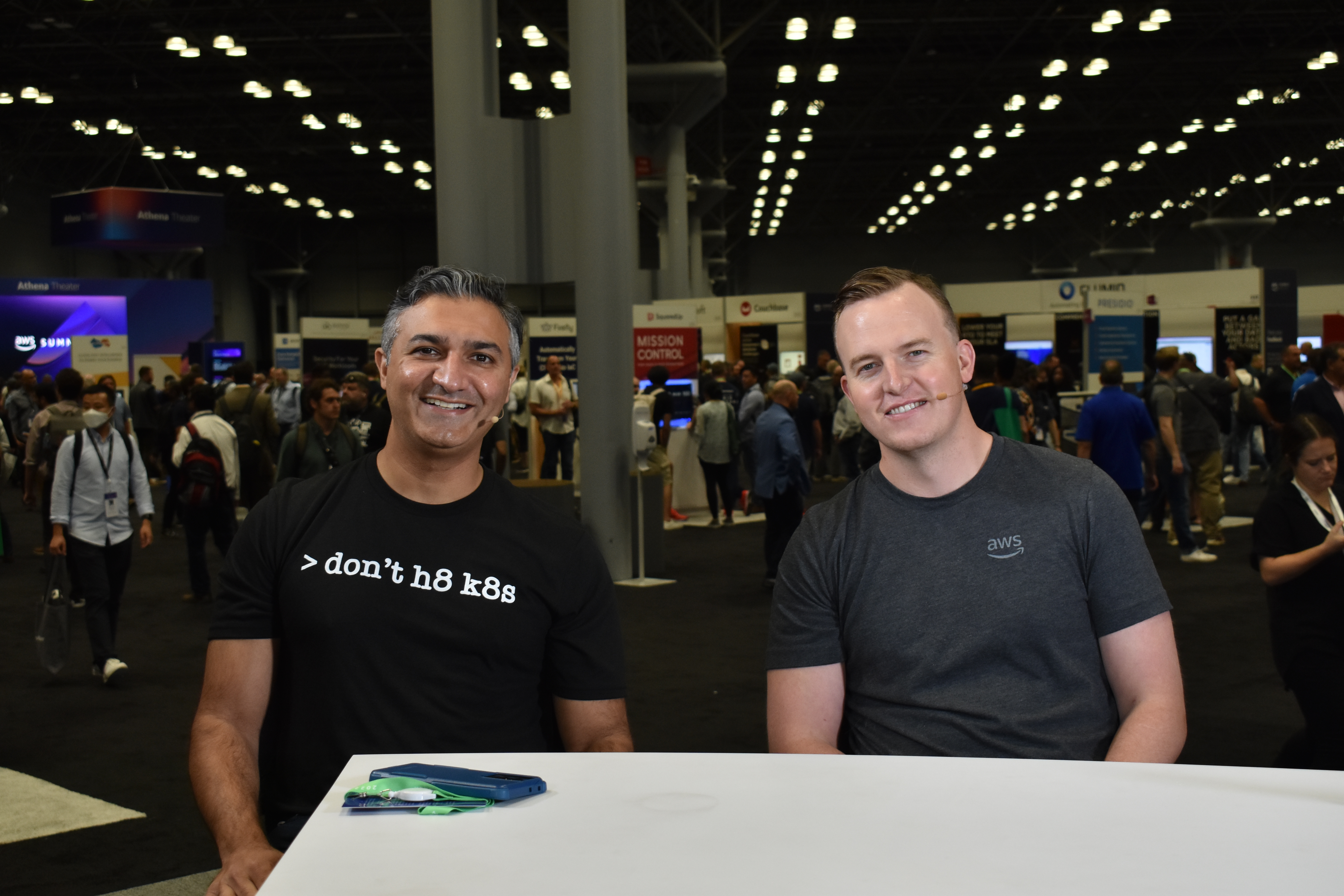 NEWS
NEWS
 NEWS
NEWS
 NEWS
NEWS
Given the importance of K8s to the scalability and consistency requirements of today’s digital enterprises, the trend of deploying it on a unit-by-unit basis within an organization isn’t practical anymore.
K8s deployment is becoming a consolidated, company-wide effort, and platform teams must toe the line between automation and governance.
“We see a ton of customers in EKS who are building these new platforms using Kubernetes,” said Kevin Coleman (pictured, right), senior manager of EKS GTM at Amazon Web Services Inc. “The term that we hear a lot of customers use is standardization. And Kubernetes is really that compute substrate that they’re standardizing on.”
Coleman and Haseeb Budhani (pictured, left), co-founder and chief executive officer of Rafay Systems Inc., spoke with theCUBE industry analysts John Furrier and Lisa Martin at the AWS Summit New York event, during an exclusive broadcast on theCUBE, SiliconANGLE Media’s livestreaming studio. They discussed the perceived industry trends around Kubernetes. (* Disclosure below.)
It’s public knowledge that Kubernetes isn’t easy to self-manage. Thus, EKS came as a result of public clamor for a managed, open-source Kubernetes offering, according to Coleman.
“EKS is vanilla, upstream, open-source Kubernetes. So customers want to use that open-source technology, that open-source Kubernetes, and they come to AWS to get it in a managed offering,” he said.
Yes, K8s is nuanced and oftentimes downright difficult, not least because there are just not enough skilled hands. But when done right, it can be a thing of beauty, according to Budhani.
“The one thing I keep saying when I talk to analysts, I say, ‘Look, somebody needs to write a book that says, Yes, it’s hard, but yes, it can be done, and here’s how.’ Let’s just be open about what it takes to get there,” he stated.
The pair also touched on Fargate, which is a serverless compute EKS offering.
“Effectively, they get the beauty of EKS and the Kubernetes API, but they don’t have to manage nodes. So that’s, you know, a good amount of adoption with Fargate as well,” Coleman explained.
Here’s the complete video interview, part of SiliconANGLE’s and theCUBE’s coverage of the AWS Summit New York event:
(* Disclosure: Rafay Systems Inc. sponsored this segment of theCUBE. Neither Rafay Systems nor other sponsors have editorial control over content on theCUBE or SiliconANGLE.)
THANK YOU